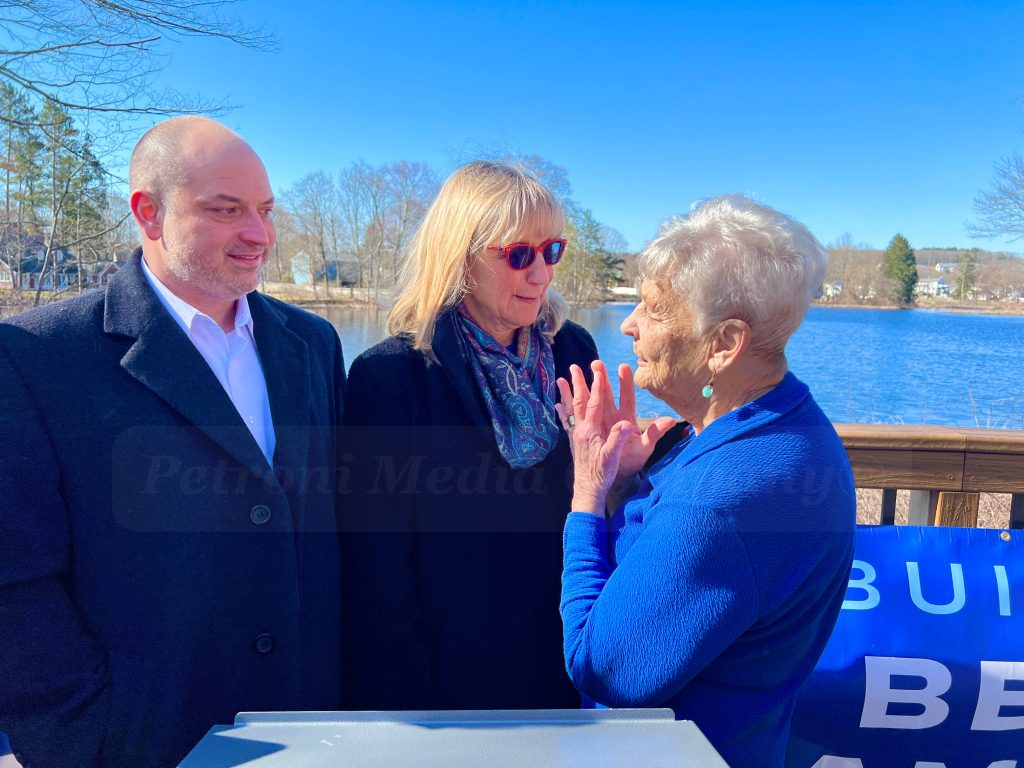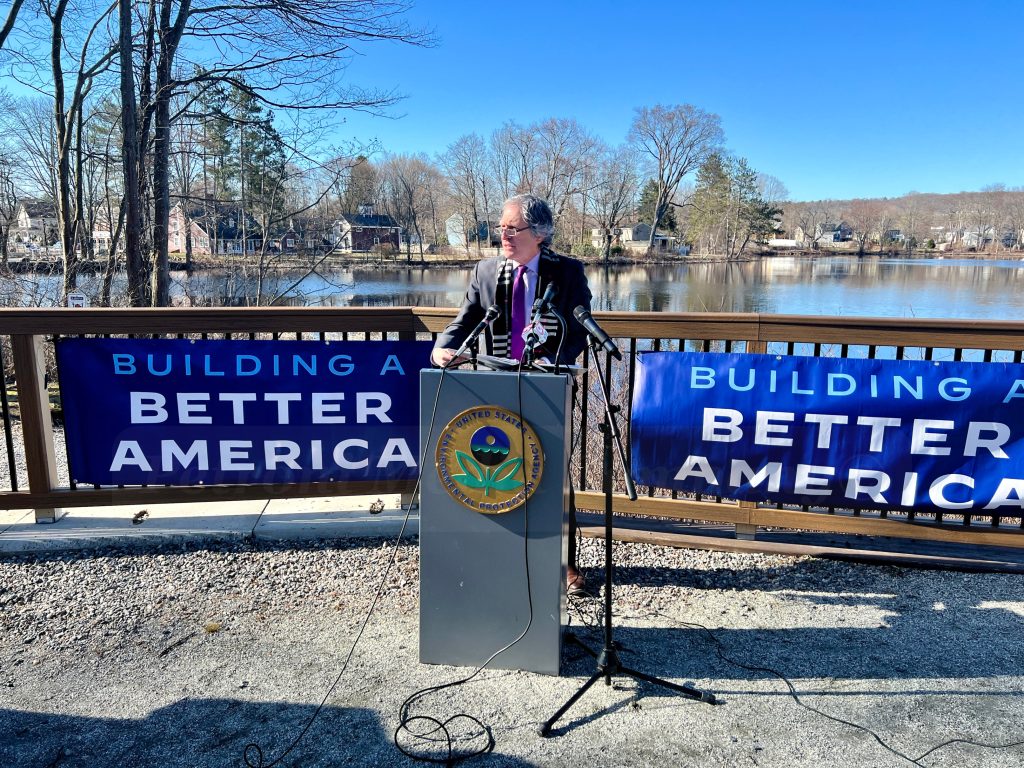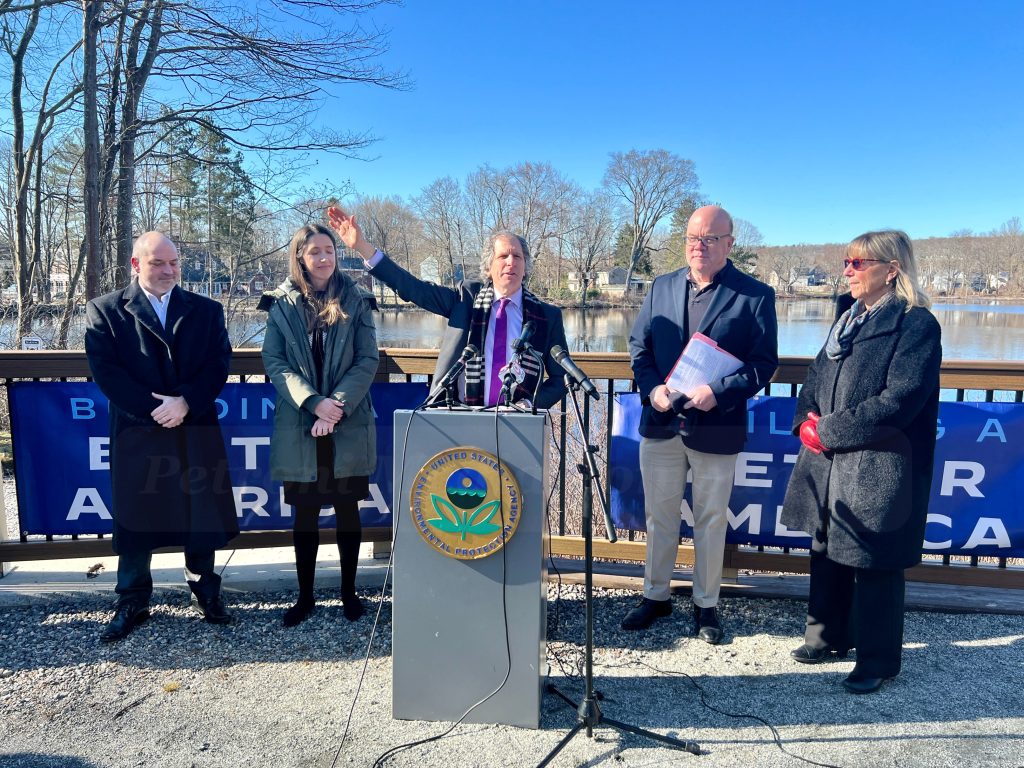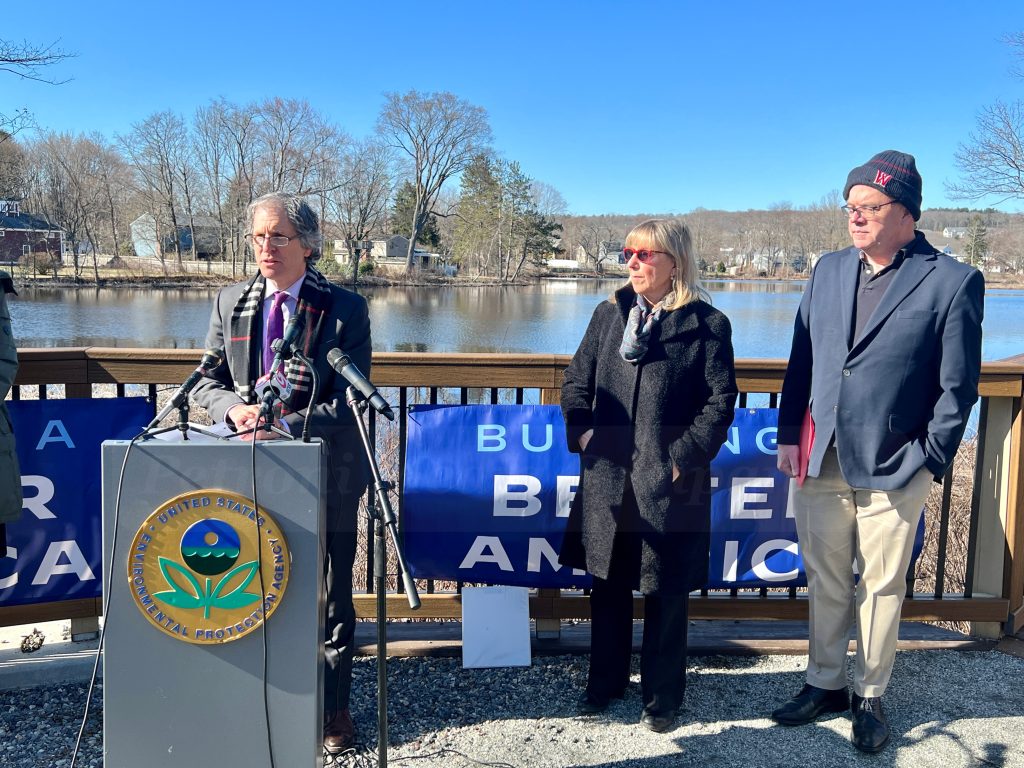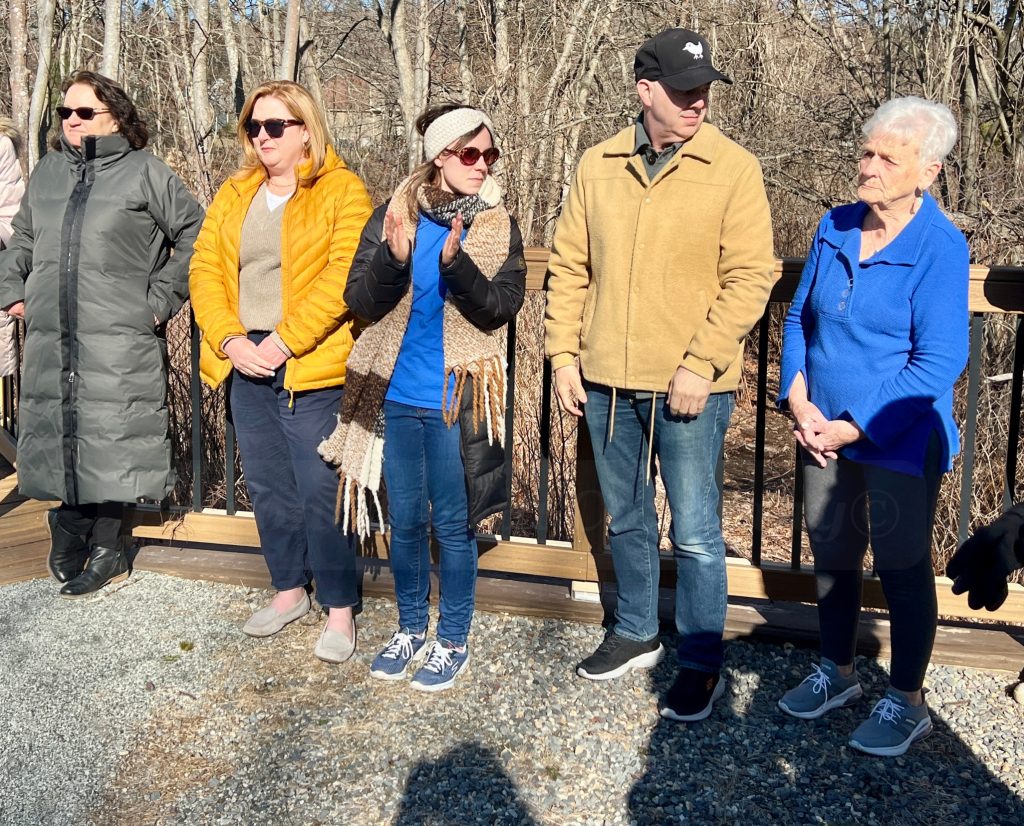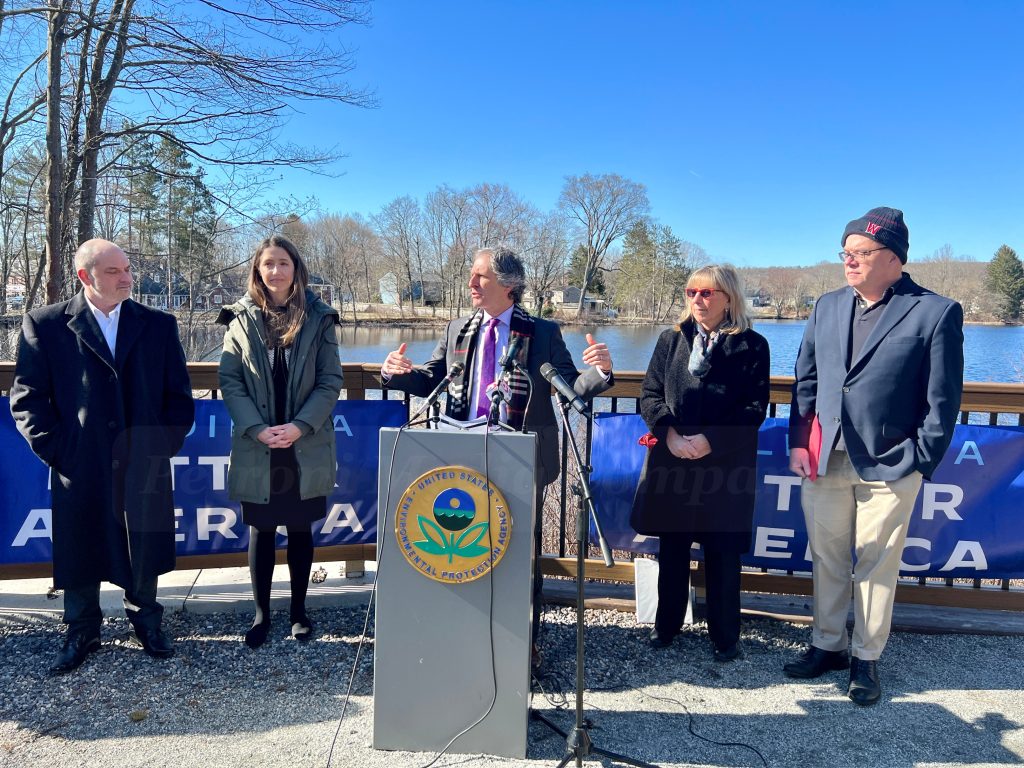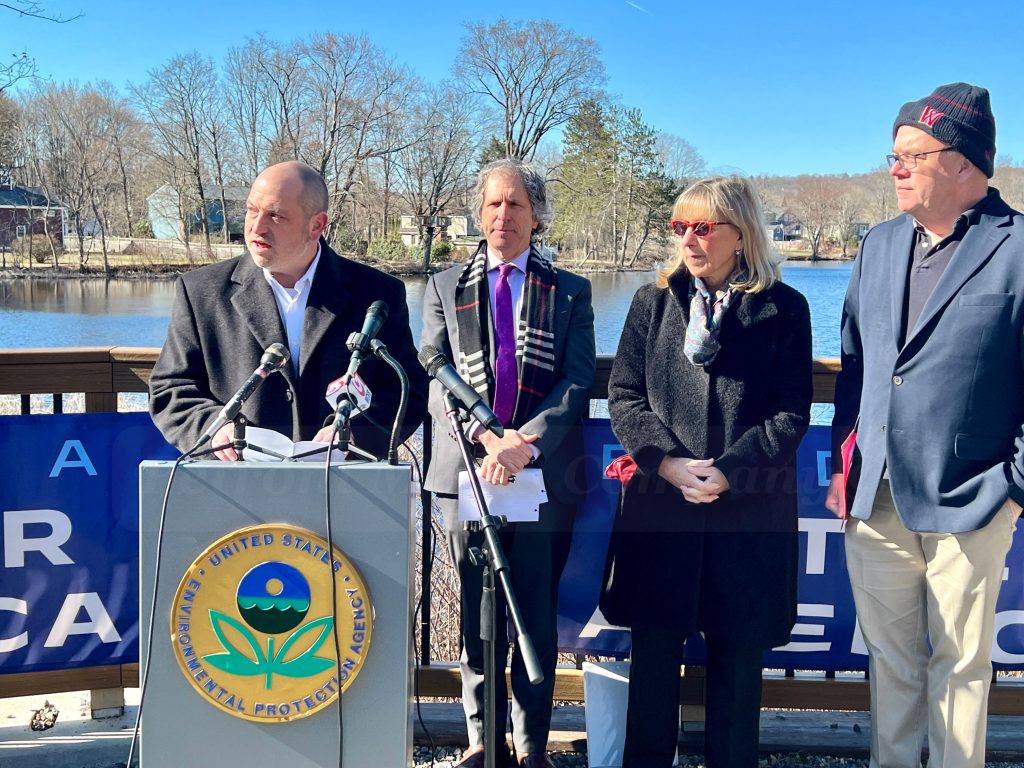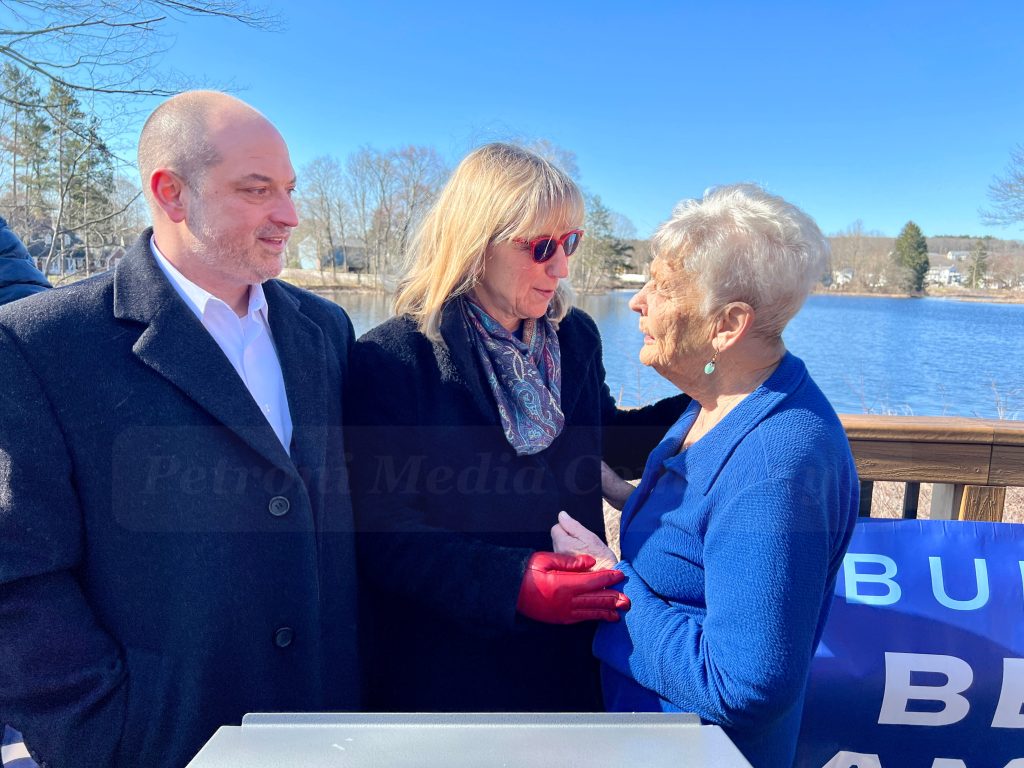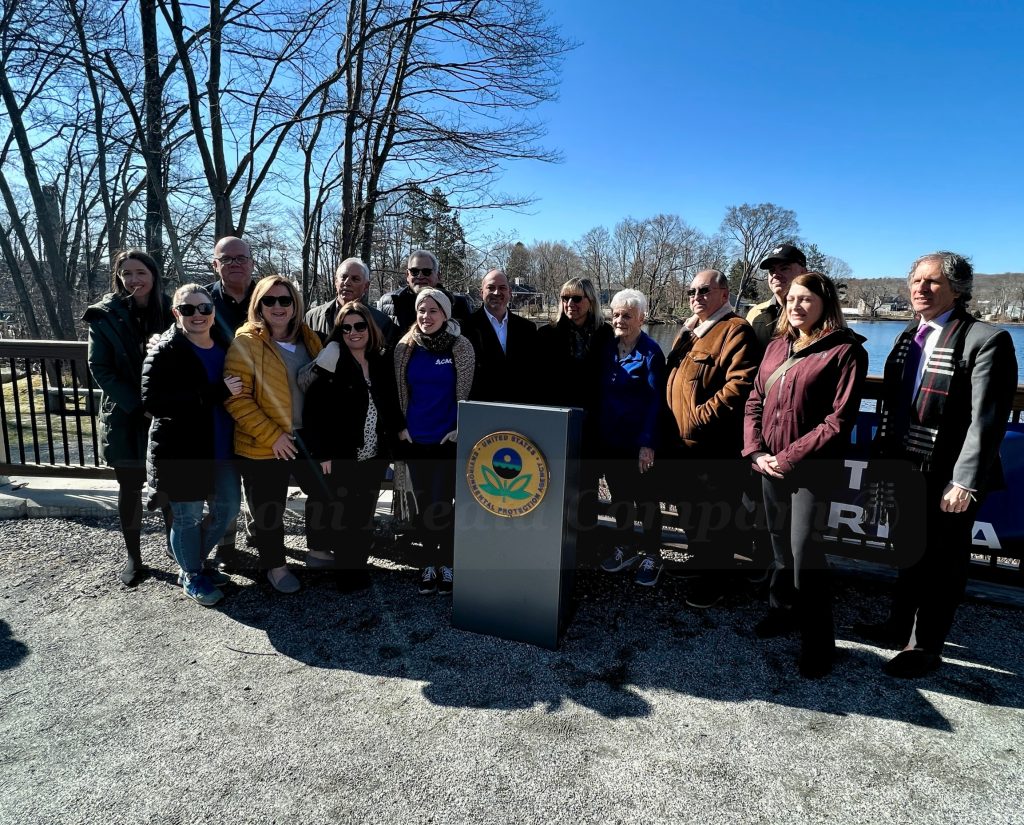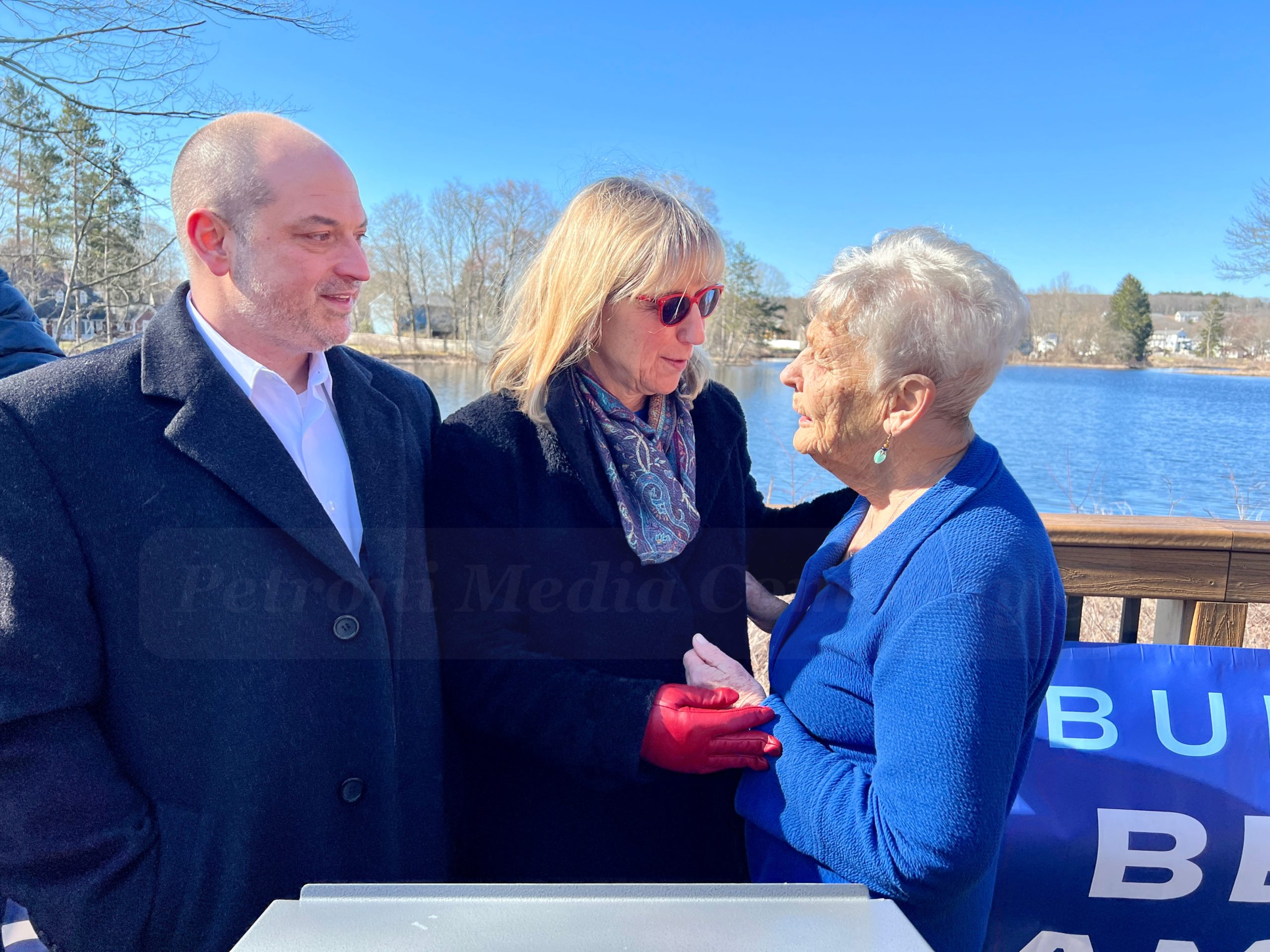ASHLAND – Twenty-five years ago this month, on April 25, Kevin P. Kane died.
In 2006, a Commonwealth of Massachusetts Department of Health study validated what Marie Kane knew – that the cluster of rare cancers, including angiosarcoma, that killed her son at age 26, was due to the Nyanza chemical plant in Ashland.
Although Nyanza closed in 1978, its impact remains in the Town of Ashland.
The U.S. Environmental Protection Agency declared Nyanza a SuperFund site in 1983.
But 40 years later, the site still was in need of funding to complete the cleanup.
But that money would not becoming without the efforts of Marie Kane and the Ashland Advocates for a Clean Environment, which was formed long ago by Holly Buckoski, and the more recent Ashland Citizens Action Committee (ACAC), founded by Cara Tirell, a 1990 Ashland High graduate.
Kane said yesterday that the funding has been a dream of hers.
[broadstreet zone=”58610″]
“”This has been a dream of mine for these past 25 years that this would come to fruition – the Town would be further cleaned than it was at the time, and that my son’s work – he didn’t die in vain,” said Kane.
“Nyanza site was once home to a chemical manufacturing plant that operated from the early 1900s until the 1970s. During this time, the plant discharged toxic waste into the surrounding environment, including the Sudbury River and nearby wetlands. This contamination has had a devastating impact on the local ecosystem and the health of Ashland and the surrounding communities,” said Town Manager Herbert.
“But there is hope,” said the Ashland Town Manager. “In recent years, a very complex and concerted effort has been made to clean up the Nyanza site and remediate the damage caused by those decades of pollution. This has been a collaborative effort between the Environmental Protection Agency, the Massachusetts Department of Environmental Protection and the Town of Ashland. The cleanup has involved a range of measures including the removal of a contaminated soil sediment and groundwater, as well as the construction of a new wetland area to help restore the natural ecosystem. The cleanup also involved the removal of buildings structures on the site, which have been contaminated with hazardous waste. Today, most of the site has undergone a remarkable transformation because what’s what once was a polluted wasteland, is now thriving wetland resource area home to a diverse range of plant and animal species.”
[broadstreet zone=”59983″]
“The cap has been repurposed as a solar energy facility providing clean power to the region, and this has been made possible by the hard work and dedication of the many people, many people I should say, involved in the cleanup effort. But the Nyanza cleanup is about more than just restoring the natural environment is also about protecting the health and the wellbeing of our local community,” said Town Manager Herbert. “The pollution of the Nyanza site has had a significant impact on the health of those living in the surrounding areas. With increased rates of cancer, birth defects, and other health, health issues, the scars from Nyanza still run deep by cleaning up the Nyanza site. We are not only remediating past mistakes, but we are also creating a safer, healthier future for the people of Ashland and beyond. We owe it to ourselves and to future generations to take responsibility to the damage that we have caused to the environment.”
Senate President Karen Spilka called yesterday’s announcement for federal funding for the cleanup “bittersweet.”
“I want to remember those we have lost because of Nyanza,” said Senate President Spilka, an Ashland resident.
Spilka said this additional funding is important to “make sure the water, the soil, and the air is as safe as possible.”
Watch Sen President Spilka speak here: https://www.instagram.com/p/Cqk7MvRLCBL/
“We are turning the page and this announcement of plunge to expedite cleanup at Nyanza is a direct result of the bipartisan infrastructure law,” said Congressman James McGovern, who now represents Ashland.
[broadstreet zone=”59982″]
“The bipartisan infrastructure law is historic. That’s no exaggeration. When President Biden signed it in 2021, we began the largest investment in our communities that we have seen in generations. We’re seeing 1.2 trillion in total spending go to our long, neglected physical infrastructure. There’s upwards of 12 billion on the table from Massachusetts alone,” said Congressman McGovern. “So instead of just talking about investments in our community are about how we need to clean up these dirty sites under President Biden’s leadership, we’re finally doing it. And so investments in our environment like EPAs work here are about more than just cleanup itself by restoring healthy air, water, and soil.”
Sites that have been waiting for this kind of influx of funds, there are thousands of these contaminated sites all over the country. Abandoned, uncontrolled, hazardous waste, haven’t been dumped there, left in the open and otherwise improperly managed that we are dealing with now,” said Environmental Protection Agency (EPA) Region 1 Regional Administrator David W. Cash.
The Mass DPH study in 2006 showed, which had more than 1350 participants, indicated individuals who swam and even waded in water contaminated by Nyanza developed cancer two to three times more often than those who avoided the water.
[broadstreet zone=”59947″]
Cash said funding is helping communities “transform these properties, creating jobs in overburdened communities, repurposing these sites to be reused and allows them to be used for businesses, residents as warehouses. And in this particular case, to be repurposed for solar power generation. What better message is there to return a contaminated site like this into something that’s producing clean energy? It’s phenomenal, and we’re really excited that the three of those 22 sites are in Massachusetts in which the funding is coming this year for continued work in Nyanza is one of those.”
The last round of funding, means more work can begin on the site as early as May 2023.
More than two decades ago, Ashland Citizens Action Committee formed to fight a proposed 240-unit condo project near the Nyanza contamination in Ashland.
In 2019, a solar array was built on the site.
In 2020, the EPA unveiled a plan to eliminate a contaminated groundwater plume at Nyacol Nano Technologies and Worcester Air Conditioning.
This month, 25 years after Kane’s son died from cancer, she is working to revitalize the healing garden built in his honor in the community, near the ballfields.
“It is important for residents to remember what happened here, for it to be completely cleaned up, but also to heal,” said Kane.
[broadstreet zone=”59945″]
